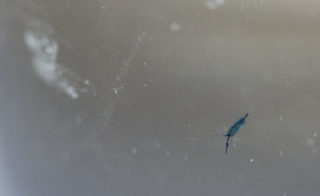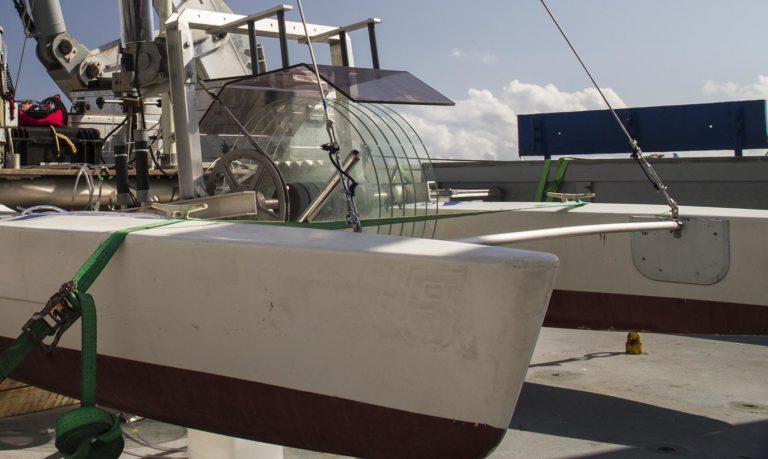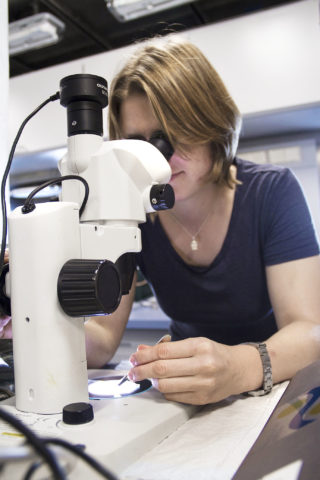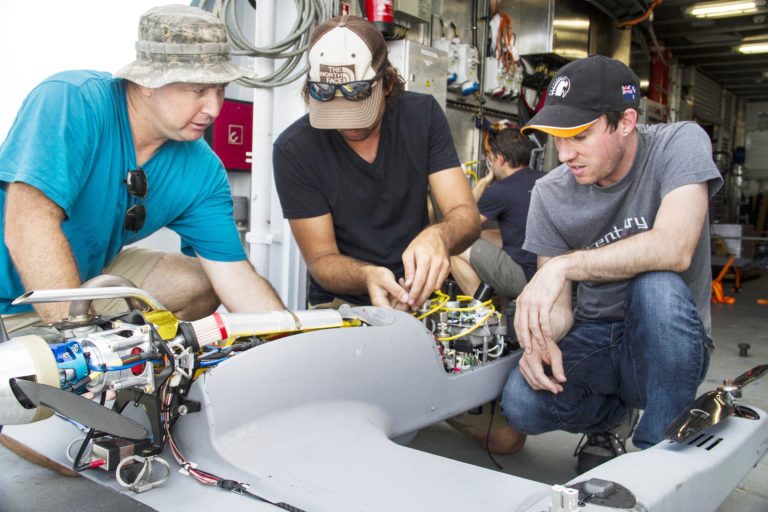A small crowd congregates around the UAV in the flight deck. The experts quickly retrieve the data and instruments while the Latitude team checks the drone and disarms it. No matter how many times it flies, it always instills the same amount of fascination in attending scientists and crew. As it lands, Ili Hamizah Mustaffa, Janina Rahlff and Oliver Wurl make an exciting discovery in the wet lab. The water samples from the catamaran have brought some unexpected guests: copepods. Big blue copepods, to be exact.

Zooplankton is certainly not the study focus of Oliver’s working group, but for a while, these small crustaceans become a reminder of the complexity of the oceans’ systems. Every working team onboard has specific questions they would like to see answered, but on top of those, they are all always attentive for new learning opportunities. Janina and Ili collect the specimens and prepare them for the journey back home, where they will take a deeper look at them.
Going Up
As the catamaran sails for nine hours around Falkor, it collects sea surface microlayer samples. Rotating glass plates dip into the water, collecting the oily microlayer as it sticks to the plates. The catamaran then wipes the sample into a container, while it also extracts a different sample from a one-meter depth. This is the first time that Oliver’s team has found copepods in the samples since they first started using the catamaran. The instrument had been previously deployed in the North Sea, where copepods – if at all present – could be too small to spot.
An interesting fact beyond the presence of the copepods is where they have been found. They have only come up in the microlayer samples, not in the water collected at different depths. These specific copepods are planktonic, which means they drift in sea waters, and they have one particularly interesting ability: they can synthesize oil in order to become buoyant and float to the surface. If that is their behaviour, why are they only appearing in the surface?


On the Lookout
Janina’s master thesis dealt with copepods. Still, as she examines them through a microscope, many questions come to her mind.
First things first: determining the species. The list of possibilities is extensive in this part of the Pacific Ocean, so Janina decides her best bet will be to consult an expert back ashore. It is unlikely, but there is still a chance that this could be a new species.
Next, their color. Why is it blue? The team hypothesizes it could be for selective advantage: in these waters, blue seems to be the best camouflage these animals could develop against predators. However, the color could also come from the blue algae these crustaceans feed from.
Another question has to do with each specimen’s gender. Janina believes she has identified the male and female copepods through a differentiating feature in their antennas, but she will have to wait for the expert’s final ruling to be sure.
One thing is for sure: these copepod’s presence in the microlayer is not accidental. Zooplankton is one of the bottom layers of the food chain, and copepods seem to be migrating to the microlayer to feed. The microlayer plays a fundamental role not only in our planet’s chemistry; but also in our ocean’s productivity.
The UAVs take off again, as do the catamaran, the sniffel and the rest of the instruments. Oliver, Janina, and all the experts onboard return to their respective fields of study. They will remain on the lookout for new opportunities to learn unexpected lessons about the relations of the microlayer with everything around it, from the atmosphere to the food we put in our tables.


